
Novosibirsk is the largest city and administrative centre of Novosibirsk Oblast and Siberian Federal District in Russia. It had a population of 1,612,833 in 2018, making it the most populous city in Siberia and the third-most populous city in Russia. The city is located in southwestern Siberia, on the banks of the Ob River.
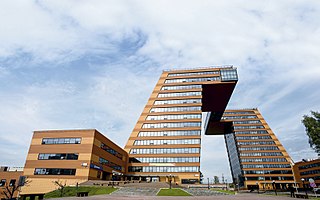
Akademgorodok is a part of the Sovetsky District of the city of Novosibirsk, Russia, located 30 km south of the city center and about 10 km west of the Science town Koltsovo. It is the educational and scientific centre of Siberia.
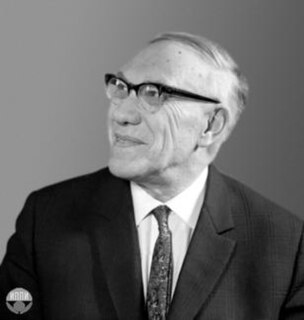
Mikhail Alekseevich Lavrentyev was a Soviet mathematician and hydrodynamicist.

The Russian Academy of Sciences consists of the national academy of Russia; a network of scientific research institutes from across the Russian Federation; and additional scientific and social units such as libraries, publishing units, and hospitals.

Prof Sergei Lvovich Sobolev HFRSE was a Soviet mathematician working in mathematical analysis and partial differential equations.

Novosibirsk State University is a public research university located in Novosibirsk, Russia. The university was founded in 1958, on the principles of integration of education and science, early involvement of students with research activities and the engagement of leading scientists in its teaching programmes. As for 2022, Novosibirsk State University has 246th place in the rating of the QS World University Rankings.

Yerevan State University, also simply University of Yerevan, is the oldest continuously operating public university in Armenia. Founded in 1919, it is the largest university in the country. It is thus informally known as Armenia's "mother university". Of its 3,150 employees, 1,190 comprise the teaching staff, which includes 25 academicians, 130 professors, 700 docents, and 360 assistant lecturers. The university has 400 researchers, 1,350 post-graduate students, and 8,500 undergraduates, including 300 students from abroad.
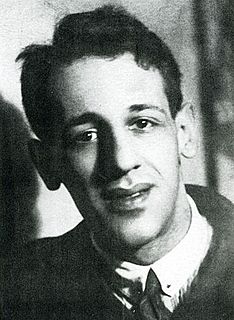
Yuri Borisovich Rumer was a Soviet theoretical physicist, who mostly worked in the fields of quantum mechanics and quantum optics. Known in the West as Georg Rumer, he was a close friend of Lev Landau, and was arrested with him during the Great Purge in 1938.

National Research Tomsk Polytechnic University (TPU) is a historically fourth technical university in Russia and the first one in Asian Russia. TPU is a member of 12 international associations and consortiums, including the European Association of Research Management and Administrations (EARMA), the Conference of European Schools for Advanced Engineering Education and Research (CESAER), the Consortium Linking Universities of Science and Technology for Education and Research (CLUSTER). It was a member of the European University Association (EUA) until March 2022.

Irkutsk State University was founded in October 1918 in Irkutsk, Siberia. Nowadays Irkutsk State University is a large scientific and educational institution training students in humanities, natural, technical and applied sciences. ISU facilities include 8 educational institutions, 11 faculties, the scientific library that is one of the largest University libraries in Russia. ISU offers bachelor, master, post-graduate programs for more than 18,000 students that have opportunity to specialize under the supervision of world-known scientists.
Education in Siberia expanded greatly after the Trans-Siberian Railway was completed in the 19th century. While Siberia became part of Russia in the 17th century it was not until the 20th century under the Soviet Union that education was transformed which in turn brought Siberia to economic importance. This was aimed at uniting people under the Soviet. For example, the Irkutsk State Linguistic University served as "a conduit between Russia and these native people by teaching languages" during the communist era. Imperial Russia began uniting Siberia to Russia by founding Siberia's first university, Tomsk State University, in 1878.
Transbaikal State University is an institution of higher education in Chita, Russia. It is the largest educational, scientific and innovative center in Zabaykalsky Krai. Transbaikal State University was established in 1974 on the base of the Technology Department of Irkutsk Technical Institute which was opened earlier in 1966.
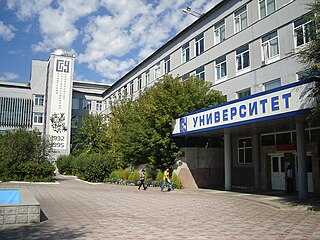
Buryat State University is institution of higher education, one of the leading educational and scientific centers of Siberia and the Russian Far East, located in the city of Ulan-Ude, Buryat Republic, Russia. Courses are taught in Russian and Buryat. It was established in 1932 as the Buryat State Teachers' Training College, and became a university in 1995. It is a member of the University of the Arctic.
Silicon Taiga is a nickname for Akademgorodok, a Russian research and development center that is located near Novosibirsk. The nickname is a reference to the Silicon Valley, a renowned IT region found in Northern California. The term was first introduced to the Western press by Newsweek magazine in 1999.
Olga Pavlovna Frolova (Chernykh) / Russian: Óльга Пáвловна Фролóва (Черны́х) is a Russian orientalist who wrote her major works on the Japanese and Chinese linguistics. She is a professor and a public figure. She received such State Rewards as the Order of the Rising Sun in 2007, The Order of Merit for the Fatherland in 2010, etc. At present she is the head of the Oriental Branch at the Foreign Languages Department of Novosibirsk State University (NSU).
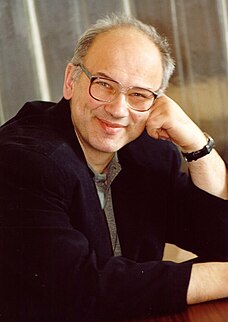
Alexander Nikolaevich Gorban is a scientist of Russian origin, working in the United Kingdom. He is a professor at the University of Leicester, and director of its Mathematical Modeling Centre. Gorban has contributed to many areas of fundamental and applied science, including statistical physics, non-equilibrium thermodynamics, machine learning and mathematical biology.
Dr Sergey Vasilyevich Goldin was a Soviet and Russian geophysicist, Academician of RAS, member of European Academy of Science and American Geophysical Union, director of Institute of Geophysics in Sibiria Branch of RAS.

Project 5-100 is a special government run program to develop major Russian universities. The program was launched by the Russian Ministry of Education and Science. Project 5-100 was aimed to improve the prestige of Russian higher education and bring at least five universities from among the project participants into the hundred best universities in the world according to the three most authoritative world rankings: Quacquarelli Symonds, Times Higher Education or Academic Ranking of World Universities. Project 5-100 played a significant role in increasing the visibility and status of Russian higher education and science in the global scientific and educational space. Based on the analysis of the results of Project 5-100, Accounts Chamber of the Russian Federation made a conclusion that Project 5-100 generally corresponded to many trends that designate the initiatives of academic excellence in leading economies, including stimulating competition among universities, internationalizing all areas of activity and increasing scientific potential. The implementation of Project 5-100 led to significant positive systemic changes: Project 5-100 noticeably strengthened university science, without which advancement in global rankings could not be possible. The number of Russian universities in the international institutional rankings ARWU, THE and QS increased more than threefold, from 15 to 51. Eight universities participating in Project 5-100 were included in the top-100 World subject rankings, taking 16 positions in it. A significant qualitative shift took place in the development of Russian higher education system and science in general. Project 5-100 universities also formed a modern infrastructure for solving various scientific issues. Within the walls of educational institutions, new world-class research laboratories, in which the work is headed by leading Russian and foreign scientists, were established. Students, undergraduates and postgraduates were involved in the new laboratories to conduct research in topical scientific areas.

Tyumen State University, also known as the University of Tyumen, is a comprehensive and research-intensive university in Tyumen, Russia. The University of Tyumen was the first university in Tyumen Oblast and was founded in 1930. Nowadays the UTMN consists of 15 institutes. The total number of students at the university is more than 27,000, including more than 1,900 international students. The total number of faculty and staff is more than 2,000. Today the UTMN trains qualified specialists in 175 fields. The UTMN offers various forms of study: full-time, part-time, distance education, master's degree, undergraduate education, graduate, doctorate, advanced training, and second degree. The University is one of the participants of the Project 5-100 – the program of improving international competitiveness of the Russian institutions of higher education among the world's leading research and education centers. The University of Tyumen is ranked 801-1000 in the QS Global University Rankings 2022.

Sovetsky District is an administrative district (raion), one of the 10 raions of Novosibirsk, Russia. It is located on the right and left banks of the Ob River. The area of the district is 89,2 km2. Population: 141,911.














